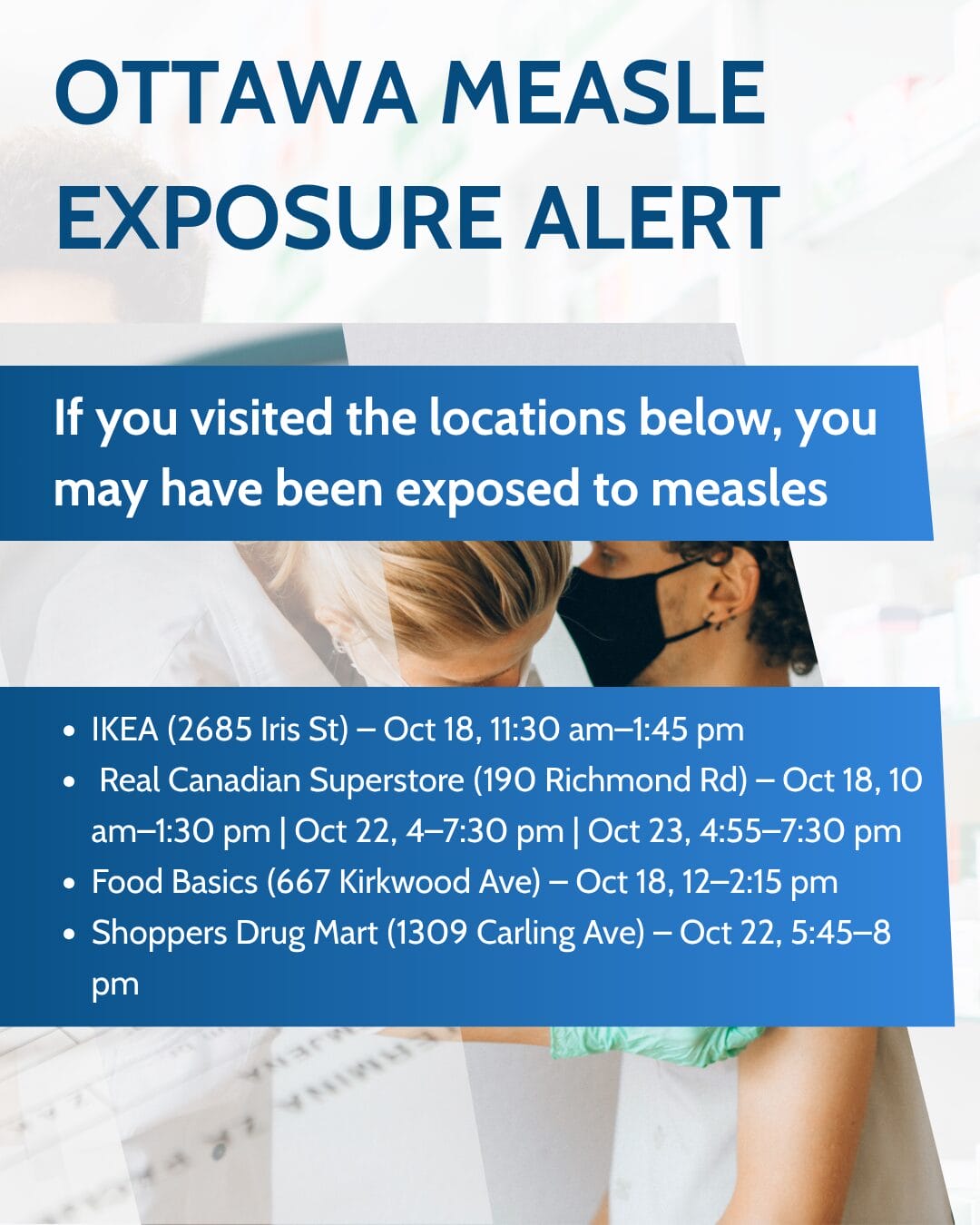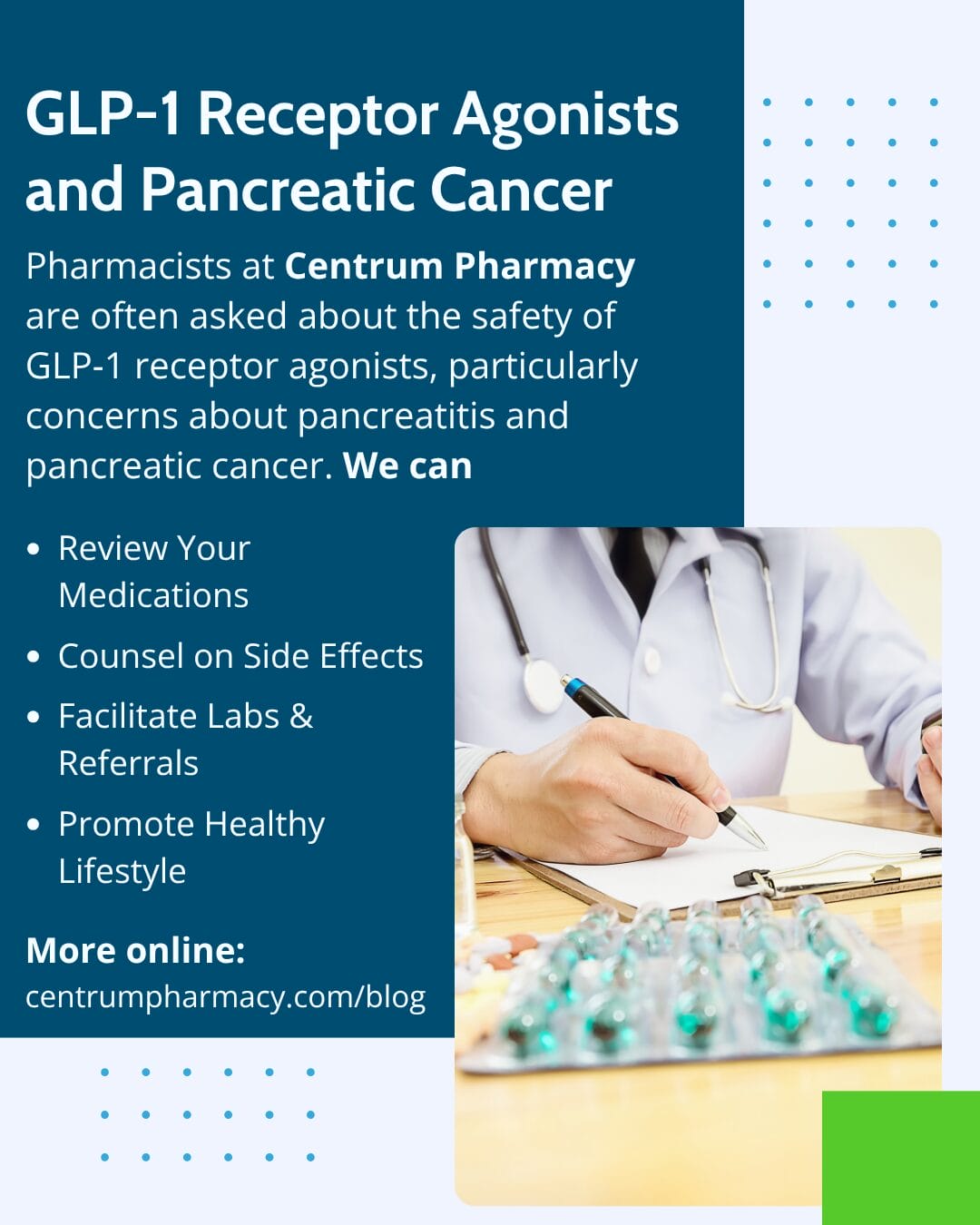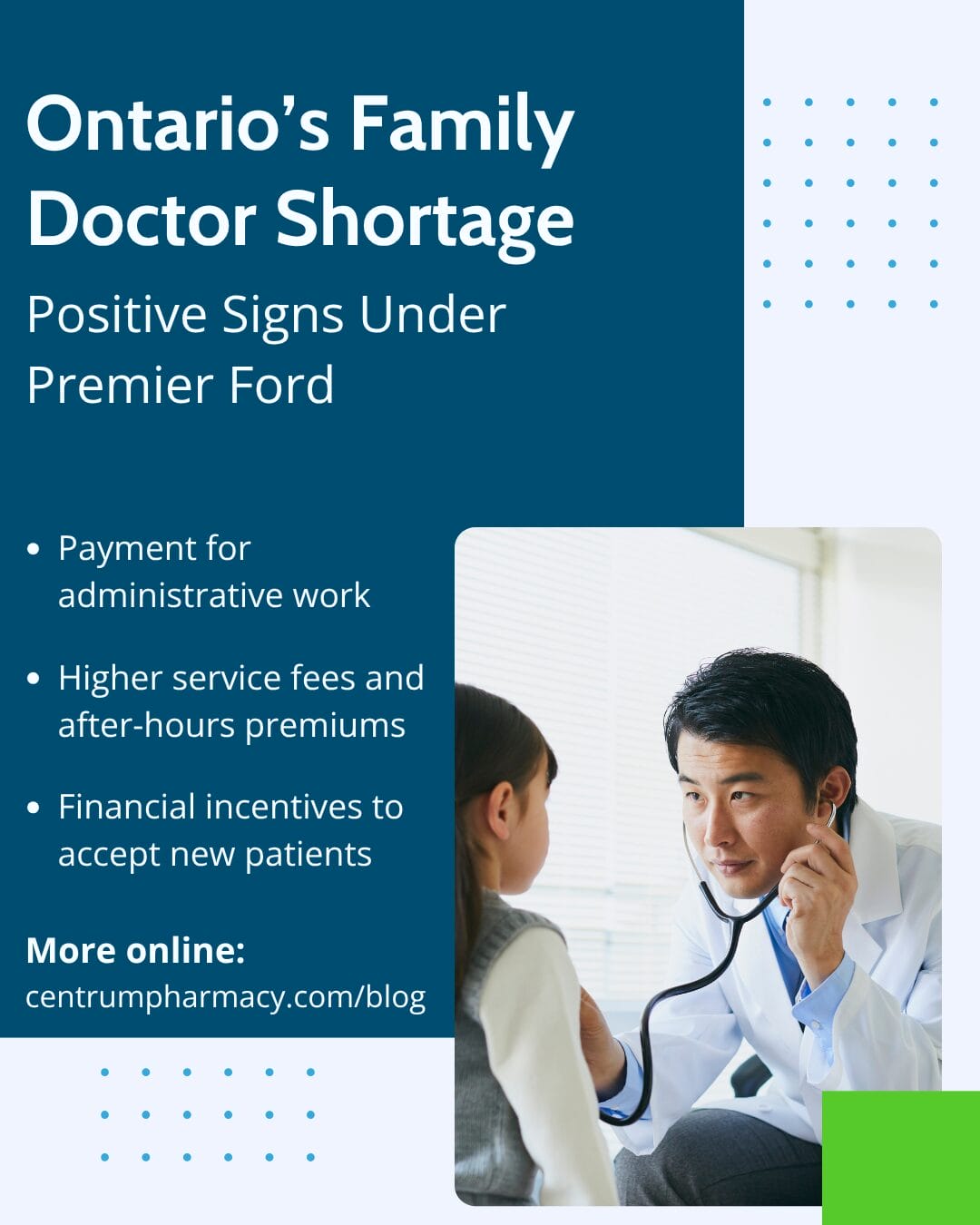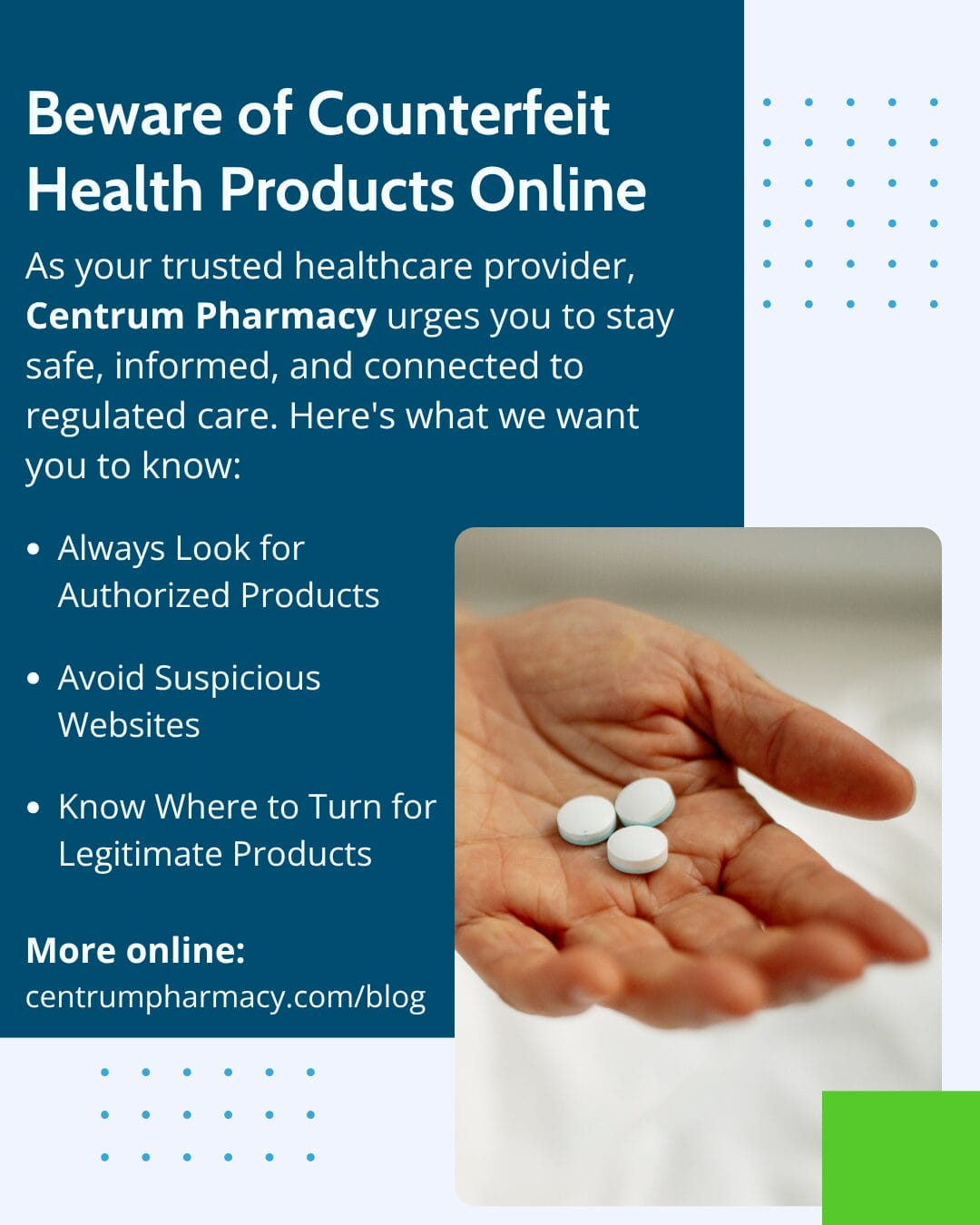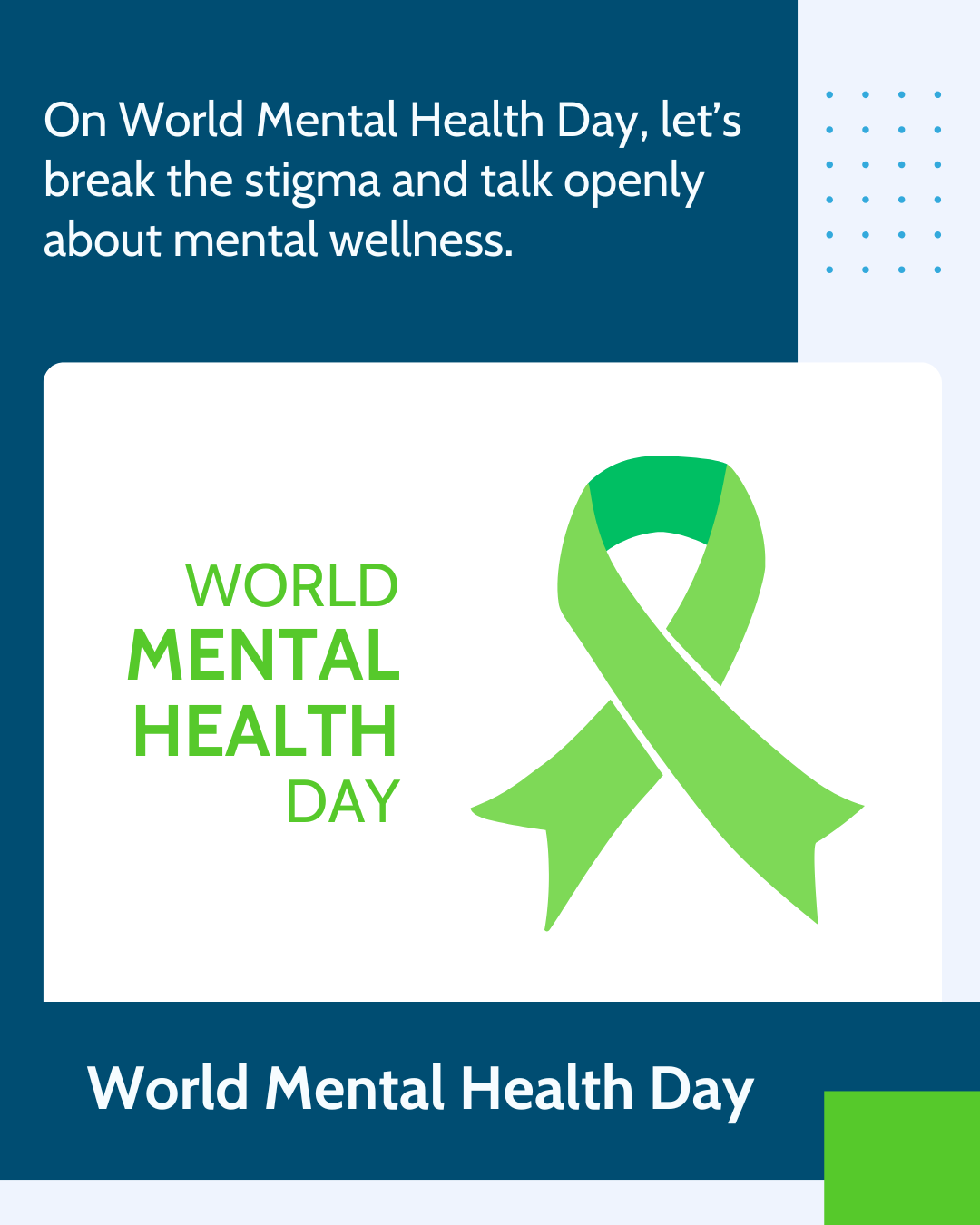Halloween is a time of fun costumes, spooky decorations, and of course, lots of candy! But with all the excitement, it’s easy to overlook some health and safety tips that can help make this Halloween enjoyable and safe for the whole family. At Centrum Pharmacy, we’re here to share a few helpful tips to ensure a Halloween that’s memorable for all the right reasons. (more…)
Author: Centrum Pharmacy
-

Ottawa Public Health Measles Exposure Alert – Updated October 2025
Ottawa Public Health (OPH) has confirmed two additional measles infections in Ottawa residents — bringing the total to 12 cases in 2025. These new cases are linked to previously reported infections.
While the risk to the general population remains low, OPH is releasing these details to reach individuals who may have been exposed but cannot be contacted directly.
(more…) -

GLP‑1 Receptor Agonists and Pancreatic Cancer: What You Need to Know
As specialists in diabetes care and medication management, pharmacists at Centrum Pharmacy are often asked about the safety profile of glucagon‑like peptide‑1 (GLP‑1) receptor agonists—particularly concerns about pancreatitis and pancreatic cancer. A new population‑based cohort study brings reassuring news: long‑term use of GLP‑1 receptor agonists does not appear to increase the risk of pancreatic cancer.
(more…) -

Ontario’s Family Doctor Shortage: Positive Signs Under Premier Ford
Centrum Pharmacy has long been at the forefront of bringing physicians to Orleans, Ontario, ensuring that local patients have timely access to primary care. Now, recent developments suggest that provincial efforts are finally starting to make a measurable difference.
(more…) -

Beware of Counterfeit Health Products Online: Centrum Pharmacy Has You Covered
At Centrum Pharmacy, we’ve proudly served the Orleans community for over two decades—providing safe, expert, and personalized healthcare for your family. As a locally owned, independent Canadian pharmacy, your safety is our top priority.
But now more than ever, we’re warning our patients: be cautious when buying health products online.
(more…) -

Just 7,000 Steps a Day Could Cut Your Health Risks—And Here’s What It Means for Canadians
We’ve all heard the golden rule: 10,000 steps a day keeps the doctor away. But a new global study, published in The Lancet Public Health, is challenging that long-standing belief—offering more realistic, science-backed insights that could transform how Canadians think about daily movement.
(more…) -

Thankful and Healthy: Seasonal Wellness Tips for a Happy Thanksgiving
Thanksgiving is a time to gather with loved ones, reflect on what we’re grateful for, and enjoy the comfort of good food and good company. While it’s easy to get swept up in the celebrations, this season also brings a few health challenges — from indulgent meals to colder weather and the start of flu season.
(more…) -

National Coming Out Day
Today we celebrate National Coming Out Day, a reminder that being open about who you are takes strength and deserves support.
At Centrum Pharmacy, we believe everyone deserves compassionate, judgment-free healthcare. Your health, your story, your way. -

Globe and Mail reports Manulife is ‘steering’ patients on Wegovy and Mounjaro to fill prescriptions at Shoppers Drug Mart
At Centrum Pharmacy, we believe patients—not insurers—must decide where they fill their prescriptions. But a new Globe and Mail investigation raises troubling questions about whether Canada’s largest insurer is quietly limiting that choice.
(more…) -

Mental Health Matters: Support for Your Mind at Centrum Pharmacy
On this World Mental Health Day, Centrum Pharmacy stands with the global movement to prioritize mental well-being. Your mental health affects every aspect of your life, from physical health to relationships and productivity. We’re here to support your journey with resources and products that help improve your mental wellness.
(more…)


